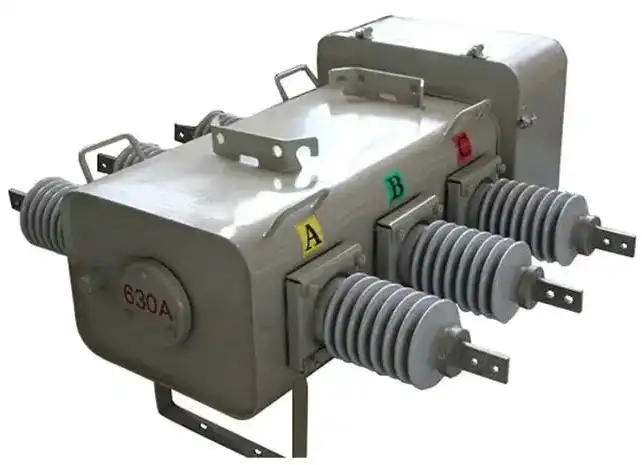The difference between a recloser and a load breaker switch
Recloser and load breakers (LBS) are two devices that play a key role in protecting the electrical grid. Their uses are similar, but there are key differences between the two. Today we’ll take a deep dive into the differences between recloser and LBS and provide guidance on when to use each.
Recloser: Applications in Smart Grids
A recloser is an intelligent device used in power distribution systems to automatically detect and interrupt power line faults. Its primary function is to improve power reliability by restoring power after a transient fault, such as a momentary short circuit or temporary line disturbance. The recloser does this by quickly isolating the faulted portion of the line and automatically attempting to reenergize after a predetermined time delay.

Features of Recloser
Fault Detection
Recloser are equipped with sensors and protection relays that detect faults such as short circuits or overcurrents by monitoring the electrical parameters of the power line.
Automatic Operation
Once a fault is detected, the recloser interrupts the power supply to the affected section. After a configurable time delay (usually a few seconds), it automatically attempts to restore the flow of power. This process is repeated a predetermined number of times until the recloser locks out, indicating a persistent fault.
Fault Isolation
By interrupting the power supply, the recloser isolates the faulted section, preventing the fault from affecting the rest of the network. This helps minimize outages and improve overall system reliability.
Communication and Monitoring
Recloser are equipped with communication capabilities that enable remote monitoring and control. This enables utilities to collect data on fault events, analyze the performance of the distribution system, and optimize maintenance activities.
Load Breaker Switch
A load breaker switch, also known as an LBS or simply a load switch, is a manually or remotely operated device used to safely disconnect electrical equipment from a power source. Unlike recloser, load breaker switches do not have automatic fault detection and recovery capabilities. Instead, their primary purpose is to provide a means of isolating and de-energizing a specific section of an electrical network to allow for maintenance or repair work.

Features of Load Breaker Switches
Manual or Remote Operation
Load Breaker Switches can be operated manually using a handle or lever, or remotely via a control signal. This flexibility allows for easy disconnection and reconnection of loads without interrupting the entire power supply.
Load Isolation
LBS devices are primarily used to isolate electrical equipment such as transformers or capacitor banks from the power supply. By opening the switch, the flow of current to the equipment is interrupted, ensuring the safety of personnel working on or near the equipment.
Limited Fault Protection
While load breaker switches can provide basic protection against overcurrent and short circuits, their primary function is not fault detection and recovery. Instead, they focus on safely isolating and disconnecting loads during maintenance or repair activities.



